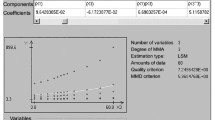Conclusions
The circuit methods for raising the precision of measuring devices are the most promising under existing conditions. It can be considered that structural methods (the use of precise and stable components, stable materials, precision manufacturing technology, etc.) have already been exhausted to a considerable extent. It is doubtful whether it would be possible by their means to raise the precision of existing measuring systems to the level which is now required.
The diversity of known circuit methods for raising the MD precision is covered by the suggested classification which separates methods on the basis of their fundamental properties due to the different MD process algorithms.
In developing modern measuring systems for which increasinglystringent metrologicaland operating requirements are specified, it is necessary to have a substantiated approach to the selection of rational methods for providing high precision of measuring devices in each specific case. For this purpose it is necessary to know both the general fundamental properties and the particular technical properties of various methods, i.e., it is necessary to have a general theory of circuit methods for providing measuring devices with a high precision and for investigating the technical realization of these methods.
This requirement is fully met only by the negative feedback methods. The compound parameter methods have been also developed, although to a smaller extent. The practical application and especially the theory of the very promising important group of error correction methods is in a rudimentary stage. The development of these methods is a very pressing task.
Similar content being viewed by others
Literature cited
M. A. Zemel'man, Izmeritel'. Tekh., No. 11 (1966).
P. P. Ornatskii, Automatic Measuring Instruments [in Russian], Izd. Tekhnika, Kiev (1965).
G. Bode, Theory of Circuits and Designing of Amplifiers with a Feedback [Russian translation], IIL, Moscow (1948).
V. N. Mil'shtein, Power Relationships in Electrical Measuring Instruments [in Russian], Gosénergoizdat, Moscow (1960).
M. A. Zemel'man and S. V. Rypalev, Author's Certificate No. 160762, Byull. izobr., No. 5 (1964).
S. M. Persin, Transactions of the Voeikov Principal Geophysical Observatory, No. 112 (1963).
É. I. Gitis and G. V. Markus, Avtometriya, No. 2 (1968).
P. V. Novitskii, Izmeritel'. Tekh., No. 5 (1963).
M. A. Zemel'man, Izmeritel'. Tekh., No. 1 (1968).
R. R. Kharchenko and Yu. I Semko, Élektrichestvo, No. 8 (1961).
A. W. Keen, British Instr. Radio Engnrs.,10, No. 6 (1950).
Additional information
Translated from Izmeritel'naya Tekhnika, No. 5, pp. 9–15, May, 1968.
Rights and permissions
About this article
Cite this article
Zemel'man, M.A. General principles for raising the precision of measuring devices. Meas Tech 11, 577–585 (1968). https://doi.org/10.1007/BF00986616
Received:
Issue Date:
DOI: https://doi.org/10.1007/BF00986616



